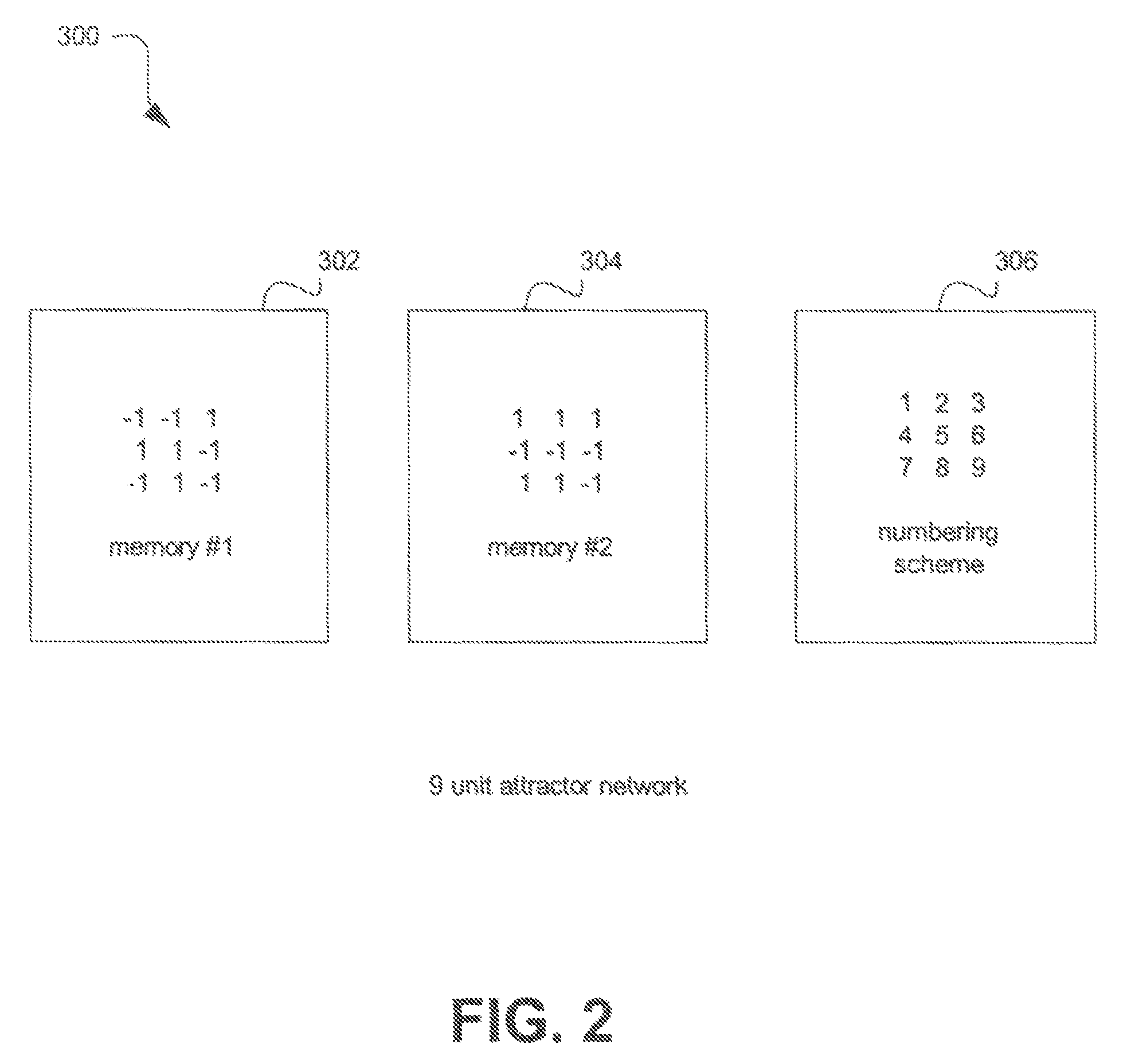Methods and systems for drug screening and computational modeling based on biologically realistic neurons
a computational modeling and biologically realistic technology, applied in chemical machine learning, chemical property prediction, instruments, etc., can solve the problems of difficult preclinical testing of the efficacy of a potential drug, unsatisfactory testing of new drugs in this way, and not all psychiatric disorders and neuropsychiatric conditions have clear behavioral correlates in animals, so as to improve the accuracy of the drug screening process, increase the number of drugs, and improve the likelihood of clinical effectiveness.
- Summary
- Abstract
- Description
- Claims
- Application Information
AI Technical Summary
Benefits of technology
Problems solved by technology
Method used
Image
Examples
example 2
Computer Model of Normal Hippocampus
[0216]The hippocampus is divided into four subfields, CA1-4 (“CA” stands for “cornu ammonis,” another name for the hippocampus suggestive of its resemblance to the ram's horn on the head of the Egyptian deity Ammon).
[0217]A computational model that represents tissue from the CA1 subfield of the hippocampus was constructed as follows.
[0218]A computer nodel representing a tissue sample from a rat brain was created. The virtual sample (hereafter, “the sample”) extended 154 micros in the septo-temporal and transverse directions, and 634 microns in the direction orthogonal to those two directions. The resulting sample, which extended from the stratum lacunosum-moleculare (“SL”) layer of the hippocampus to the alveus, included 400 pyramidal cells and 52 interneurons. The interneurons included 16 paravalbumin (“PV”) cells, 6 calbindin (“CB”) cells, 9 calretinin (“CR”) cells, and 4 cholecystokinin (“CCY”) cells. This sample was then simulated by a computa...
example 3
Computer Model of Schizophrenic Hippocampus
[0270]Although the neuropathological lesion of schizophrenia is not know with certainty, postmortem studies on the hippocampi of human schizophrenics indicate abnormalities in writing distribution of cell types, particularly interneurons, and in particular, PV interneurons. On the basis of this published data, schizophrenia was simulated by reducing the population of interneurons by 56%. The interneurons removed were PV interneurons because it is believed that the hippocamus of a schizophrenic has fewer such interneurons. The resulting model will be referred to as the “schizophrenic model.”
[0271]The remaining interneurons may show subtle changes in connectivity. These changes can be incorporated in the model by altering the data in Table 2. However, any such changes in connectivity remain unaccounted for in the present model of the schizophrenic hippocampus, in part because of a paucity of suitable experimental data.
[0272]When the schizophr...
example 4
Computer Model of Chlorpromazine-Treated Schizophrenic Hippocampus
[0274]If, for a given compound, receptor affinities, intracellular effector mechanisms, and ultimate effects on ion channel functioning are known, then the methods outlined above can be used. However, even if these parameters are unknown, drug effects can be supplied, as shown in this Example and Example 5.
[0275]The effect of chlorpromazine on neural tissue was modeled by chaning the conductances of the ion channels of each neuron. A computational model of the manner in which the conductance of sodium and potassium ion channels change with respect to time and voltage is given by equations 4.8-4.9 in the Book of Genesis (supra) as follows:
GNa={right arrow over (g)}Nam3h and
Gk={right arrow over (g)}kn4
GCa={right arrow over (g)}m2h
[0276]The conductances of a sodium channel, for example, is the product of a constant term {right arrow over (g)}Na, and two time-varying terms, m3 and h. A computational model of the time-var...
PUM
 Login to View More
Login to View More Abstract
Description
Claims
Application Information
 Login to View More
Login to View More - R&D
- Intellectual Property
- Life Sciences
- Materials
- Tech Scout
- Unparalleled Data Quality
- Higher Quality Content
- 60% Fewer Hallucinations
Browse by: Latest US Patents, China's latest patents, Technical Efficacy Thesaurus, Application Domain, Technology Topic, Popular Technical Reports.
© 2025 PatSnap. All rights reserved.Legal|Privacy policy|Modern Slavery Act Transparency Statement|Sitemap|About US| Contact US: help@patsnap.com



